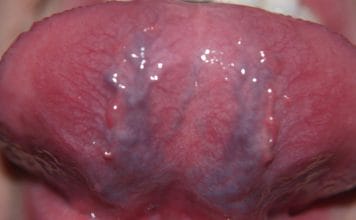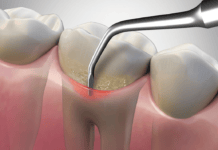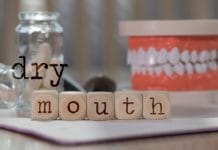Some dental hygienists have likely struggled with delegating the correct code for hygiene treatment. I know it certainly happened to me, especially when the D4346 code came into play in 2017. Dental hygienists might find it helpful to understand the differentiation of the existing codes and policies related to dental hygiene treatment types.
Further, explaining each type of hygiene treatment to patients can be difficult, so examples for each hygiene treatment type are offered along with each CDT code. Depending on each patient’s oral health literacy and individual needs, hygienists can revise or build on each example given, as these are simple starting points.
Let’s begin with the code that all of us are familiar with and hope our schedules are full of. While we surely all know this code like the back of our hands, let’s take a trip down memory lane.
D1110/D1120
D1110/D1120: “Removal of plaque, calculus, and stains from the tooth structures in the permanent and transitional dentition. It is intended to control local irritational factors.”1
- Primarily a preventive treatment for patients with a generally healthy periodontium. However, D1110 can be therapeutic for patients who present with mild, localized gingivitis to prevent the further progression of disease.2
- Scaling and polishing of all tooth surfaces.
- D1120 is for those 13 and younger. While codes are dentition-specific, many dental insurance plans are age-specific. Thus, it is important that dental offices file the claim that best describes the patient regardless of what the insurance deems appropriate.
- This procedure is completed after an oral examination is performed, which should include updated periodontal charting on adult patients to ensure the proper procedure is being completed.
Example of Explaining a Prophy to Patients
Describe to patients that their gums are relatively healthy and lack or have minimal or localized inflammation and infection.
I like to explain this as a preventive procedure, much like healthy eating and exercise as a way to prevent the onset of systemic diseases. A prophy is meant to prevent the onset of periodontal disease.
D4346
D4346: “Scaling in presence of generalized moderate or severe gingival inflammation – full mouth, after oral evaluation.”2
- “The removal of plaque, calculus, and stains from supra- and sub-gingival tooth surfaces when there is generalized moderate or severe gingival inflammation in the absence of periodontitis. It is indicated for patients who have swollen, inflamed gingiva, generalized suprabony pockets, and moderate to severe bleeding on probing. Should not be reported in conjunction with prophylaxis, scaling and root planing [i.e., non-surgical periodontal therapy], or debridement procedures.”2
- This treatment is used for permanent, primary, or transitional dentition that presents with swollen, bleeding, inflamed gingival tissues, and pseudopockets in more than 30% of the mouth in the absence of periodontitis.2 This means that D4346 can be used on pediatric patients and teenagers. D4346 may be particularly handy for children or teens undergoing orthodontic treatment.
- Unlike D1110, which is primarily preventive but can be therapeutic for patients with mild, localized gingivitis, D4346 is a therapeutic treatment for patients with generalized moderate to severe gingival inflammation.2
- It is important to remember that it is based on the diagnosis, not the intensity of treatment. In other words, this code may not be used because it took more effort to perform instrumentation, but rather used based on the diagnosis of the oral health of the patient.
- This code is used when there is no loss of attachment. Loss of attachment results from loss of bone.3
- This code is used after an oral evaluation is performed, which should include updated periodontal charting with documentation of the gingival margin to indicate pseudo-pocketing.
The D4346 code was implemented in 2017 to fill the gap in coding and prevent “undercoding” as a D1110 and “overcoding” as a D4341 or D4342 (non-surgical periodontal therapy/SRP).2
Example of Explaining Gingivitis Treatment to Patients
Describe to patients that because of the amount of inflammation and infection present (gingivitis), their treatment falls into a different category than a prophy – the treatment type they may have received before, which is to prevent infection, not necessarily to treat infection. Returning to the preventive treatment they had before is possible if they can improve their oral hygiene because gingivitis is reversible.
An analogy is to imagine if they haven’t been to the gym in a long time. When they work out regularly, they tone up and become healthier, reducing the risk of chronic systemic diseases. The same is true for their oral health condition (gingivitis). A therapeutic treatment (gingivitis treatment), proper home care, and regular dental hygiene visits will help improve gum health, allowing the patient to return to a “healthy” status.
On the other hand, if the infection persists and the bacteria become stronger/more virulent, it may lead to the breakdown of the structures that support teeth, such as bone, gum tissue, and ligaments, which don’t necessarily grow back on their own. A different treatment (non-surgical periodontal therapy) altogether is necessary in this case. Further, maintenance appointments at increased intervals would be needed to prevent further destruction of the structures that support the teeth.
D4355
D4355: “Full mouth debridement to enable a comprehensive periodontal evaluation and diagnosis on a subsequent visit.”3
- Effective January 1, 2023, the nomenclature and descriptor were revised, changing oral evaluation to periodontal evaluation.
- Previously, no examination code could be filed on the same day of service. However, with the revisions, a D0150 (initial examination) or a D0120 (periodic examination) can be filed as long as the components noted in the descriptors of these two codes have been accomplished.3 When neither can be performed in its entirety, it is suggested a D0191 (assessment of a patient) or a D0140 (limited oral evaluation – problem-focused) be filed in regards to the assessment of the patient prior to a D4355 completion.
- The only examination code that may not be filed on the same day of service as a D4355 is a D0180 (comprehensive periodontal evaluation – new or established patient.) This procedure must be performed and filed on a subsequent date of service. Additionally, a diagnosis can not be made on the same day as the completion of D4355. If the patient has a diagnosis (i.e., return for D1110, D4346, or D4342), then D4355 is not the proper treatment to be completed.3
- This procedure is the precursor to a D1110, D4346, or D4342. However, full mouth debridement should not be performed as a precursor if it is not necessary, according to the code description. For example, if a patient requires non-surgical periodontal therapy/SRP (NSPT), that does not necessarily mean a full mouth debridement should be performed. Best practice is going straight to definitive treatment (NSPT) and scaling to completion.
- Full mouth radiographs, intraoral pictures, and a narrative should accompany your claim to help with insurance payment.
Example of Explaining Full Mouth Debridement to Patients
When patients fall into this category, it is important to show them the amount of build-up that is present. Describe how this build-up prevents you from clearly examining and assessing the periodontium (gum tissue and supporting structures).
The analogy I like to describe is a roadblock. Once that roadblock is removed, the tissue can be more clearly evaluated at a subsequent visit allowing a treatment plan to be made.
D4341/D4342
D4341: The dental procedure for non-surgical periodontal therapy/SRP of four or more teeth, per quadrant.5
D4342: The dental procedure for non-surgical periodontal therapy/SRP of one to three teeth, per quadrant.5
- D4341 and D4342 are described as therapeutic, not preventive, procedures involving instrumentation of the crown and root surfaces of the teeth designed to remove plaque and calculus.2,4
- Non-surgical periodontal therapy is appropriate when active periodontitis (attachment loss) is present. Attachment loss is characterized by “relocation of the junctional epithelium to the tooth root, destruction of the fibers of the gingiva, destruction of the periodontal ligament fibers, and loss of alveolar bone support from around the tooth.” 2
- The amount of calculus deposits alone does not determine the need for non-surgical periodontal therapy.
- To ensure insurance payout, it is important to provide all the necessary information to corroborate your claim. Full mouth radiographs, periodontal charting, diagnosis, and treatment planning will help assist in filing these codes successfully. D4341/D4342 claims tend to have a higher frequency of denial than other procedures.1
These procedures are the forerunner for periodontal maintenance procedures.
Example of Explaining Non-surgical Periodontal Therapy to Patients
Describe to patients that the virulent/pathogenic bacteria in their mouth, and their body’s immune response to it, has led to the destruction or breakdown of the structures that support the teeth. These structures include bone, gum tissue, and ligaments, which don’t necessarily grow back on their own.
Without treatment, further destruction and loss of bone and supporting structures may occur, which could lead to gum recession, loose teeth, periodontal abscess, and/or tooth loss. Here, the risks of chronic inflammation and the oral-systemic link could be addressed too.
An analogy that can be used in describing non-surgical periodontal therapy is as a type of wound care. When you have a wound, the wound must be cleaned thoroughly of all debris that could be causing the wound and infection to allow for proper healing. Imagine having a splinter in your finger; it heals much better and more quickly if the splinter is removed. If the splinter remains, the infection may worsen, and possible surgery may be required to manage the wound and infection. The same applies to periodontal disease; not treating the infection and removing the “splinter” (calculus/biofilm) will possibly result in some type of surgical procedure, making non-surgical periodontal therapy the preferred, first-line and more conservative treatment.
Using charts, models, or illustrations to help patients understand attachment loss and what periodontal stage they fall into will aid in your ability to describe this form of treatment. Once patients can grasp the magnitude of their periodontal health, they may be able to better understand the procedure needed to treat the condition.
D4910
D4910: Periodontal maintenance procedures (following active therapy).1
- “This procedure is instituted following periodontal therapy and continues at varying intervals, determined by the clinical evaluation of the dentist, for the life of the dentition or any implant replacements. It includes removal of the bacterial plaque and calculus from supragingival and subgingival regions, site-specific scaling and root planing where indicated and polishing the teeth. If new or recurring periodontal disease appears, additional diagnostic and treatment procedures must be considered.”2
- The procedure follows non-surgical periodontal therapy/SRP, osseous surgery, and gingival flap surgery.
- The procedure continues for the life of the dentition.
- If the patient is new to the practice but has a history of periodontal therapy, it is important to obtain this knowledge to accompany the claim for insurance filing.
- Many insurance companies have limitations on this procedure, but dental offices are legally bound to file the correct procedure. It is advised to use a narrative to ask that insurance provide alternate benefits should the claim be denied due to such limitations.
- Include radiographs and periodontal chart when submitting claims.
- It is not advised to alternate D4910 and D1110 for recall appointments. Clinicians must code for the treatment they provide; only an insurance provider can down code D4910 for D1110. Alternating codes could be seen as insurance fraud.
Example of explaining Periodontal Maintenance to Patients
Describe to patients that ongoing periodontal maintenance treatment is necessary once periodontitis has been diagnosed and initial treatment has taken place (non-surgical periodontal therapy) because periodontitis cannot be cured, only maintained. Along with excellent oral home care, periodontal maintenance visits should be more frequent because pathogenic/virulent bacteria can repopulate, and this could cause further destruction of bone and supporting structures of the teeth. Further destruction can lead to gum recession, loose teeth, periodontal abscess, and/or tooth loss.
An analogy of another more well-known chronic disease, such as diabetes, may help the patient relate the necessity of increased hygiene visits and screenings to monitor and maintain disease progression could be given. With diabetes, for example, blood sugar must be checked multiple times per day – this relates to oral home care routines. Further, a primary care doctor or other health care professional monitors A1C levels at differing time intervals depending on how well blood sugar is being managed and treatment goals are being met – this relates to the frequency of periodontal maintenance visits (2-4 month recall intervals).
In Closing
CDT codes are for documentation and reporting purposes, and dental offices are required to file the correct procedure regardless of the individual’s coverage. Using narratives to have the company provide alternate benefits will help to ensure that some form of payout is provided on behalf of the patient.
Discussing the possibility of limitations and the reason for the hygiene treatment type is important to help patients understand their diagnosis. These discussions will further help the patient comprehend should the insurance deny a procedure and prevent the patient from thinking the office filed an unnecessary or incorrect procedure. The various codes available to dental hygienists have helped open doors to not only providing the correct care to the patient but also helping to educate the patient on their periodontal condition.
Before you leave, check out the Today’s RDH self-study CE courses. All courses are peer-reviewed and non-sponsored to focus solely on pure education. Click here now.
Listen to the Today’s RDH Dental Hygiene Podcast Below:
References
- Darst, A. (2023, February 28). CDT Codes to Report the Services by a Dental Hygienist. Outsource Strategies International. https://www.outsourcestrategies.com/blog/cdt-codes-to-report-the-services-provided-by-a-dental-hygienist/
- ADA Guide to Reporting D4346. (2023, January 1). American Dental Association. https://www.ada.org/-/media/project/ada-organization/ada/ada-org/files/publications/cdt/v6_adaguidetoreportingd4346_2023jan.pdf
- D4355 – ADA Guide to Reporting Full Mouth Debridement. (2023, January). American Dental Association. https://www.ada.org/-/media/project/ada-organization/ada/ada-org/files/publications/cdt/v2_d4355adaguidetoreportingfullmouthdebridement_2023jan.pdf
- Prophylaxis, Scaling and Root Planing Codes, and Billing Guidelines. (n.d). Delta Dental. https://www.deltadentalin.com/getmedia/a24627db-9ebb-4bcd-b076-d13f0b98730e/FLI-6396-Provider-Prophylaxis-and-Root-Planing-Code-and-Billing-Guidelines.aspx
- D4341 D4342 Coding for Periodontal Scaling and Root Planing. (n.d.). American Dental Association. https://www.ada.org/resources/practice/dental-insurance/d4341-d4342-coding-for-periodontal-scaling-and-root-planing














